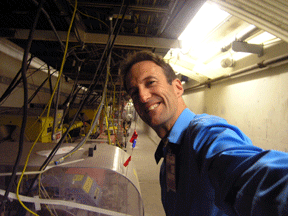Identifying signal and background events in decay channels of D*+

2015 Summer Quarknet LHCb Research Project
Akshansh Gupta (Walnut Hills High School)
Bridget Sypniewski (Mount Notre Dame High School)
Mentor Mike Sokoloff
The purpose of the LHCb work we did was to find signal regions and values from unedited, unclean information sets of different type of particle decays. Several decays were looked at and evaluated throughout the program, including Lambda decays, Dbar decays, and Dstar decays, and multiple Dplus decays. Information on these decays was supplied from LHC. In these decays, there were different intensities of entries. Consistent underlying intensity could be regarded as background, while intensity that peaked particularly high in only a specific location was regarded as signal. The goal for each situation was to find a signal in this information, and to reduce the amount of background so that the signal could be clearly seen and defined, however, in the process of reducing the background, in order to avoid losing any signal value, on occasion, background was still left in the final product. For each decay, several variables were used, such as flight distance and lifetime. These were often used to help discriminate between signal and background on the mass, and occasionally, vice versa. Evaluations were done through the use of TMVA analysis, background subtractions, and discrimination tests. These evaluations were successful at separating a signal from the background for the information given for the decays evaluated, and were generally accurate and similar to established information. The information found in my work will be later passed on to other scientists and students to do further analysis on, as well as evaluated some of the information collected from the LHC and turned raw data into a cleaner more edited format for further use and evaluation.